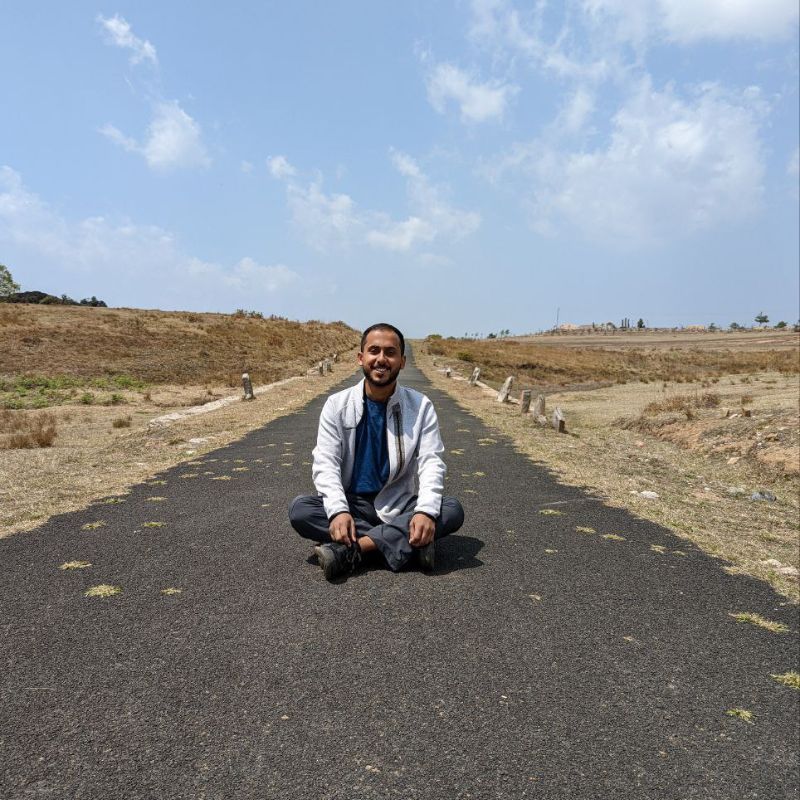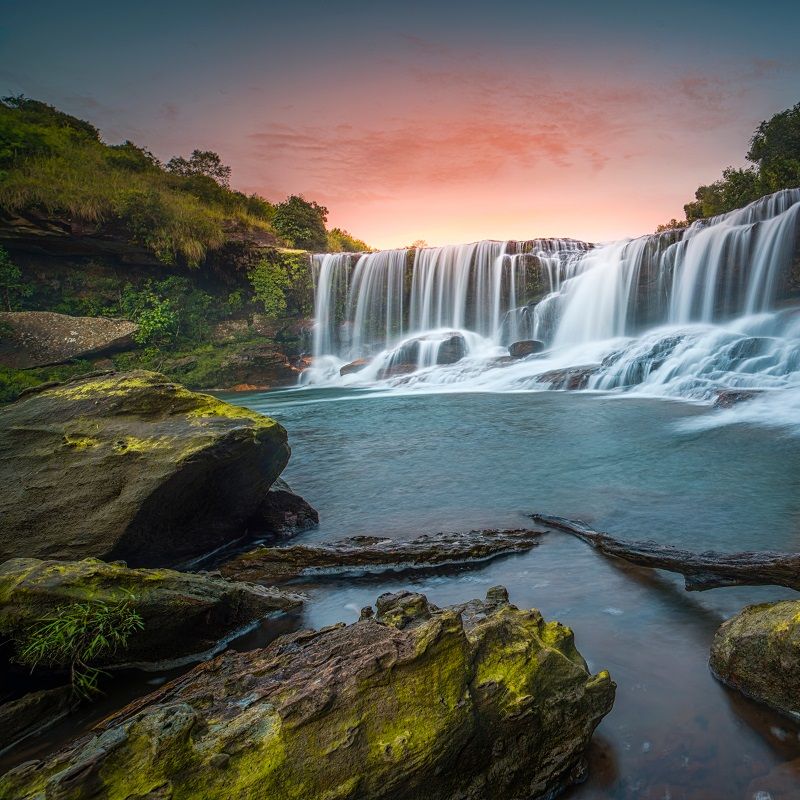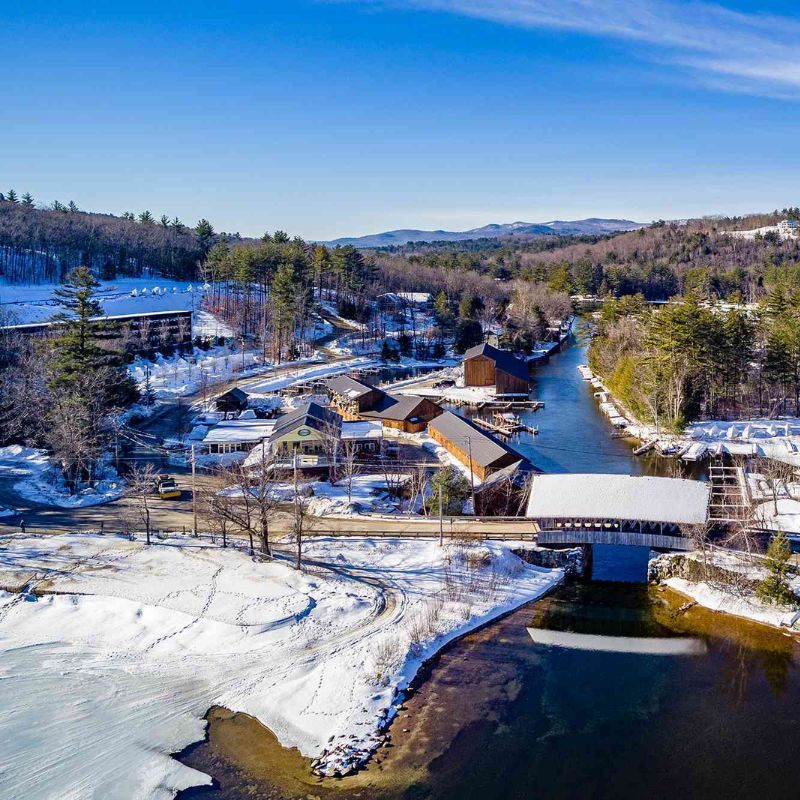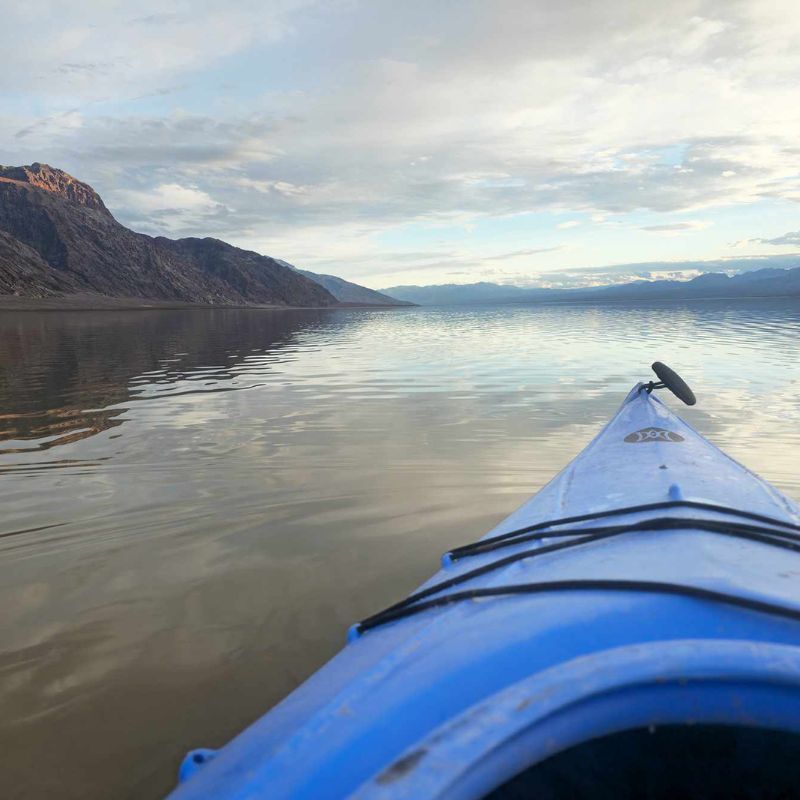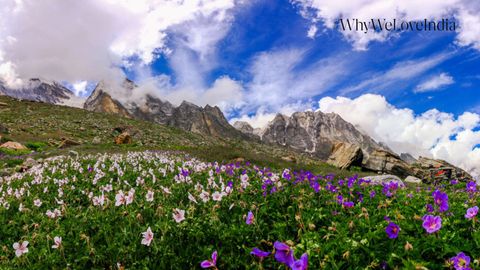
Nestled in the Garhwal Himalayas of Uttarakhand, Valley of Flowers National Park is a botanical wonderland boasting a carpet of flowers across the terrain, with Nilgiri Parbat and Rataban peaks providing a breathtaking backdrop.
Declared a national park in 1982 and a UNESCO World Heritage Site in 2005, the Valley of Flowers is known for its unique and diverse alpine flora, including numerous rare and endemic species of flowers. Its challenging and rugged paths and rich biodiversity make it a trekker’s paradise, attracting adventurers and nature enthusiasts from around the globe.
Whether you seek solitude in the wilderness or a chance to immerse yourself in the marvels of the natural world, this enchanting destination promises an expedition of a lifetime. To assist you in preparing for this adventure, we have crafted a perfect trekking guide. So, lace up your hiking boots and embark on a journey to this picturesque national park.
All you need to know about the Valley of Flowers trekking experience
Valley of Flowers – History

The Valley of Flowers was discovered in 1931 by three British mountaineers, led by Frank S Smythe. They accidentally found the valley during their expedition to Mount Kamet, the second-highest mountain in the Garwhal region. They named the scenic landscape the Valley of Flowers. Smythe later authored a book by the same name.
Apart from its natural allure, the national park also holds a significant mythological association. According to the epic Ramayana, it is the place where Lord Hanuman found the magical herb “Sanjeevani” to help save Lakshman, brother of Lord Rama, who was injured during the battle between Rama and demon King Ravana. This also gives the valley a touch of spiritual importance, attracting pilgrims and tourists alike.
Valley of Flowers Location
The Valley of Flowers National Park is located at about 11,800 feet (3,600 metres) in the Chamoli district, near the Indo-China border. Valley of Flowers National Park is spread over 87 square kilometres and forms one of the two core zones in the Nanda Devi Biosphere Reserve, the other being the Nanda Devi National Park.
Valley of Flowers – How To Get There
To begin the trek, you need to reach Govindghat (6,000 feet above sea level), which is the starting point and has a lot of lodging facilities. From here, you have two options: you can either begin your trek directly or drive further on the motorable road until it ends at Pulna village, which shortens the trek by 4 km.
Rishikesh is the closest city, with its railway station being the nearest railhead to Govidghat. At a distance of 266 km, it will take about eight hours to reach the town by car. For anyone planning to fly down, the Jolly Grant airport in Dehradun is the nearest airport, located 280 km away.
Valley of Flowers Itinerary
This is an easy to moderate-level trek, which starts and ends in Govindghat town (or Pulna village). If you plan to begin from the town, the 38-km-long circuit can be covered in three days.
Day 1: Govindghat to Ghangaria (15 kilometres)
Trekkers should ideally begin the first leg of the trek with a gradual ascent from Govindghat at about 7:00 am. The route offers glimpses of the mesmerising Pushpawati River and lush green forests. It will take about eight to nine hours to reach Ghangaria, a quaint Himalayan village about 10,000 feet above sea level. The village serves as the base camp for the Valley of Flowers and has guesthouses, eateries and stunning scenery, making it an ideal place to rest and acclimatise yourself.
Note: You should aim to reach Ghangaria before sunset (6:30 pm) as the terrain is rocky, steep at a few places, and there is no clear trail, making it difficult to navigate during the dark.
Day 2: Ghangaria to Valley of Flowers and back (8 kilometres)

Embark on a memorable expedition to the Valley of Flowers post breakfast around 9 am. You will have to carry your own food as there are no stalls after Ghangaria. The narrow path winds through dense forests and uphill mountain trails before you reach the valley in about three hours.
The trail opens up to a world of diverse flora, where vibrant flowers such as primulas, orchids, and poppies adorn the valley floor. You might also come across the elusive blue sheep.
Return to Ghangaria before sunset for an overnight stay, as the journey back takes two to two and a half hours, and it gets dark after 6 pm.
Day 3: Ghangaria to Govindghat (15 kilometres)
Bid farewell to Ghangaria and retrace your steps back to Govindghat. This is a long trek that typically takes about six to seven hours, so it is advisable to start at the crack of dawn. The downhill trek will allow you to savour the beauty you might have missed during your ascent. After reaching Govindghat, rest and rejuvenate for the journey back home.
Note: You also have the option to hire a horse to go back to Govindghat from Ghangaria.
Valley of Flowers trek essentials: Gear, Bookings & Tips
- Check with your doctor and get the necessary medical clearance before planning this trek. The hike is not ideal for people with bronchial asthma, heart disease or high blood pressure.
- Buy the ticket from the entrance of the park. It is valid for three days. Indian nationals need to pay an entry fee of INR 150, while foreigners must pay INR 600.
- Pack light but adequately, including warm clothing, rain gear, a first-aid kit, and comfortable trekking shoes.
- Stay hydrated and carry water bottles. Water sources are available along the trail, but it’s essential to take purification tablets.
- Acclimatise properly to avoid altitude sickness.
The best time to visit Valley of Flowers

The Valley of Flowers National Park is open for visitors from June to October or November. Flowers are in full bloom between July and mid-August. The winter season has temperatures ranging from -5 to 10 degrees Celsius, while summer provides a warmer setting between 15 to 20 degrees Celsius.
The national park welcomes visitors from 7:00 am. The last entry is permitted until 2:00 pm. As you plan your trek, remember that July-August is a monsoon season, and heavy rains can wreak havoc in the mountains. It is advisable to factor in the weather conditions while embarking on this journey.
There’s another trek close to the Valley of Flower that can be a part of your itinerary. Here are all the details about the Hemkund Sahib trek.
Hemkund Sahib trek

Perched at 13,123 feet above sea level in Chamoli district, Hemkund Sahib is a renowned Sikh Gurudwara. The shrine is surrounded by snow-capped peaks and the pristine Hemkund Lake. The pilgrimage site also houses a temple dedicated to Lakshman.
The Gurudwara is approachable from Ghangria, which serves as a base camp for this Sikh shrine as well. Start your Hemkund Sahib trek early in the morning for this 6 km journey, as it takes about three hours to reach the place of worship.
The trail ascends steeply through alpine meadows and offers panoramic vistas of snow-capped peaks. Seek blessings at the gurdwara and immerse yourself in the tranquillity of the surroundings. After descending back to Ghangaria, a journey of about two and a half hours, you can stay at one of the lodging facilities in the village.
Please note that a hike to this revered site would add one more day to your itinerary.
(Hero image credit: euttaranchal.com, feature image credit: uttarakhandtourism.gov.in)
Related: Picturesque Hill Stations In Uttarakhand For A Perfect Vacation
FAQs (Frequently Asked Questions)
Answer: To reach the Valley of Flowers, first, make your way to Govindghat, a small town in Uttarakhand, accessible from major cities like Rishikesh (266 km), Haridwar (292 km), and Dehradun (303 km). Jolly Grant Airport, Dehradun, is the nearest airport, 280 km away. From Govindghat, you have two options: a 15 km trek or a shorter 4 km drive to Pulna village, from where the trek is only 11 km to Ghangaria and another 4 km to the Valley of Flowers from Ghangaria.
Answer: June to October or November, but to see the flowers in full bloom, the ideal time to visit is from July to mid-August. Note: Check the weather predictions before planning the trek
Answer: Indian nationals need to pay an entry fee of INR 150, while foreigners can enter by paying INR 600. This entry ticket allows you to stay for three days. If Indian visitors wish to stay longer, they can pay an extra INR 50 for each additional day, while foreigners must pay INR 250 for the same privilege.
Answer: The Valley of Flowers is situated at approximately 11,800 feet feet above sea level, making it an accessible trek with an easy to moderate difficulty level. Even first-time trekkers can attempt it. However, there are some steep inclines, and it's essential to have a basic level of physical fitness to undertake this trek safely.
Answer: Being a world heritage site, tourists cannot camp or stay overnight. They can only stay in hotels, guest houses, or camps in Ghangaria, the base camp for the trek to the Valley of Flowers.
Answer: Yes, there are many notable attractions, such as Badrinath Temple, Mana village, Auli, Malari village, Hemkund Sahib and Bedini.
Answer: Cash, rain cover, trekking boots, waterproof jackets, warm clothes, backpack, sleeping bags, reusable water bottle, medicines, toiletries, camera and torch are some of the essentials to carry for you Valley of Flowers trek.
Answer: It is free to click pictures with still cameras. For Indian visitors, the fee for bringing a professional video camera inside the valley is INR 500 per day, while foreigners are charged INR 1500.
Answer: You will come across exotic flowers like the Cobra lily, blue poppy, orchids, primulas, calendulas and daisies. The valley is home to several high-altitude animal species - Himalayan black bear, red fox, blue-throated barbets, Himalayan musk deer and flying squirrel.



